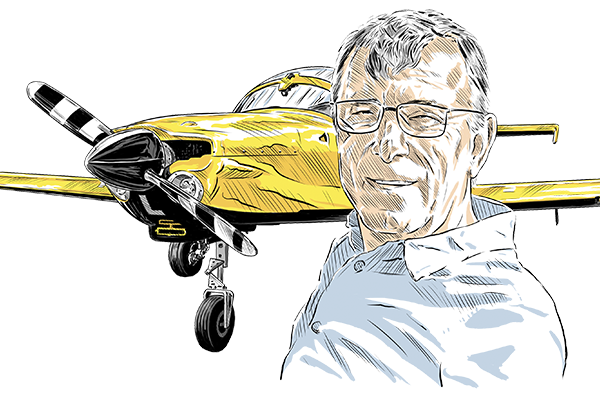Several years ago FLYER ran a feature on ‘To Pull or Not’, about the pilot decision making involved in deploying the Cirrus Aircraft CAPS parachute system and how the system could make a difference in various accident scenarios. Since then, there have been plenty more ’chute pulls, in both Cirrus and other types, but as parachute systems typically must be designed and built into an aircraft from the outset, and the option to retrofit them to aircraft is rare, it’s still far from becoming a common method to use in an emergency situation.
Accident 1
The pilot, owner of a Cirrus SR22, accompanied by a passenger, took off from Toussus-le-Noble aerodrome for a local pleasure flight. After 50 minutes of flight, the engine oil pressure, stable at 54psi since take-off, began to drop and continued to do so until reaching zero at the end of the flight. Over that time, the oil temperature rose very slowly. The pilot detected the drop in oil pressure about 20 minutes after the drop began and initiated a diversion to the nearest airfield, but then considered this to be a false indication due to the stability of the oil temperature and resumed navigation to the intended destination.
“The aircraft was pulled inverted by strong winds dragging the parachute”
Shortly thereafter, he observed an increase in the oil temperature and again commenced a diversion. The engine oil had gradually leaked out, possibly due to improper positioning of the oil filler cap during the pre-flight check. The engine stopped in flight and the pilot decided to deploy the Cirrus Airframe Parachute System (CAPS), landing upright in a ploughed field, although subsequently the aircraft was pulled inverted by strong winds dragging the parachute.
CAPS is designed to reduce the risk of injury to occupants. A number of safety aspects contribute to achieving this: deployment parameters, seat belts and harnesses firmly attached, and a body position ensuring optimal performance of the energy absorption systems on impact.
Specific training for pilots operating aircraft equipped with CAPS is important, and does exist, but is not compulsory. The philosophy developed in the manufacturer’s online training strongly encourages the use of CAPS, while the procedure described in the flight manual leaves the pilot with more room for interpretation. The decision to use the parachute is not taken lightly and it is recommended that pilots consider before flight the various scenarios that could lead to its use.
The procedures associated with the use of the parachute are specific and need to be understood by the pilot.
However, only the procedure to be followed for the deployment of the parachute need be committed to memory. Ideally, pilots should know the scenarios requiring immediate action and be certain to memorise all the associated drills. These procedures should be explained to passengers before each flight as a passenger may have to release the parachute and manage the procedure alone, for example in the event of a pilot’s incapacity.
Finally, this event showed that under certain circumstances (strong wind in this case) the aircraft can be turned onto its back by the CAPS parachute after landing, making evacuation more difficult. (Translated from the French report)
Accident 2
An experimental Titan Tornado aeroplane collided with terrain shortly after take-off from Spanaway Airport, Washington. The commercial pilot was seriously injured and the aeroplane substantially damaged.
As the aeroplane climbed about 200ft agl, the pilot could not maintain level flight and had to apply full right aileron and right rudder. The aeroplane rolled left and he simultaneously reduced engine power and applied forward elevator in an attempt to arrest the roll. Despite his attempts, the aeroplane continued to roll left with the nose about 180° from the runway heading. Unable to regain directional control, the pilot decided to deploy the BRS. With an airspeed of about 70kt and a level attitude, the pilot pulled the activation handle.
The pilot reported that after deploying the BRS, the left roll reduced to less than 5° of bank, and he realised that he would not be able to return back to the runway. He concentrated his efforts on avoiding the trees and executed a forced landing in a field adjacent to the runway. He attempted to configure the aeroplane in a landing flare prior to touchdown by applying aft elevator. The aeroplane did not respond and touched down hard on the main landing gear, followed by the nose gear collapsing.
As a result of the impact, the pilot’s legs were injured and he was unable to egress under his own power. The engine continued to run and the parachute drifted into the propeller. The damage to the instrument panel made him unable to shut down the engine and it continued to operate until the parachute suspension lines stopped the propeller.
The aeroplane was configured in a pusher-type style, with the engine mounted above and aft of the cockpit. The propeller remained attached to the engine with all three blades intact. Approximately three to four feet of the BRS suspension lines were tightly wrapped around the propeller prohibiting crankshaft rotation. The activation handle inside the cockpit appeared to be in the ‘deployed position’. A placard in the cockpit read: ‘Aircraft engines must be shut off prior to deploying parachutes. Failure to do so may result in death or serious injury’.
An examination of the aileron system revealed that there was continuity from the aileron control surfaces to the actuation tube in the cockpit. The upper attach point of the control tube (near wings) remained intact and the lower end (in cockpit) was found disconnected from the control mixer weldment. The stop-nut that normally is affixed to the bolt connecting the aileron control tube to the control yoke tube was found on the cabin floor about five inches from the ball joint. The bolt end had a hole for a cotter pin, but no cotter pin was located.
The aeroplane had accumulated 24 hours since inspection when the flight controls had last been disturbed.
Accident 3
A Cirrus SR-22 was substantially damaged when it impacted terrain after the CAPS was deployed near Kennesaw, Georgia. The private pilot and passenger sustained minor injuries.
“With no clear landing area at night over an urban area, the pilot used CAPS”
During the descent from 17,500ft amsl, as the aeroplane was passing through about 7,500ft amsl, the pilot felt a jolt from the engine and subsequently received a low oil pressure alert. The pilot diverted to a closer airport and continued the descent. When the aeroplane was about 2,000ft amsl, the pilot felt additional jolts and observed sparks emanating from the engine cowling area. Shortly thereafter, the engine lost total power. With no clear landing area available in nighttime conditions over an urban area, he activated the CAPS and the aeroplane impacted trees and terrain with the parachute deployed.
The aeroplane came to rest upright and the fuselage, wings, and empennage sustained substantial damage. The engine crankcase at the Nos 6 cylinder displayed a fracture hole and the connecting rod had sheared from the upper crankshaft bearing. There was no evidence that oil had sprayed along the fuselage or windscreen. The source of the interruption of oil circulation to the engine could not be determined.
Accident 4
A Cirrus SR22 aeroplane was ditched into the Atlantic about 25 miles south-east of Grand Turk, Turks and Caicos. The private pilot and one passenger sustained minor injuries.
The aeroplane was not recovered and presumed substantially damaged. The pilot, who owned the aircraft, reported that the yellow low oil engine pressure light illuminated about two hours into the flight while at 8,000ft amsl. The analogue oil pressure gauge confirmed the low oil pressure reading of 25 psi. The oil pressure continued to drop and the pilot notified ATC of the situation. As the oil pressure dropped to two psi, the engine vibrated strongly and the propeller stopped. The pilot established the best glide speed and deployed the CAPS at 1,500ft above the water. The aircraft landed upright in the water. The life raft was inflated and the pilots egressed from the aircraft. They were rescued by a passing cruise ship two hours later.





